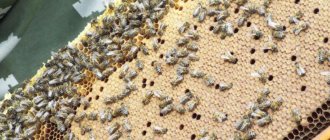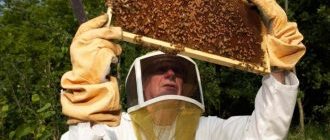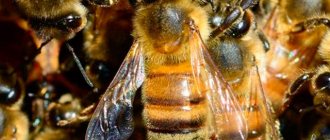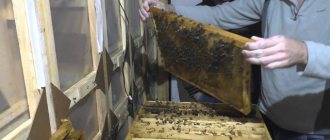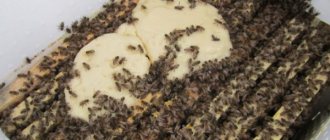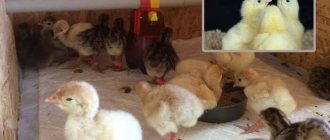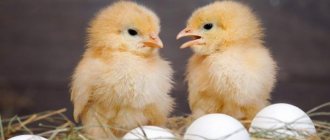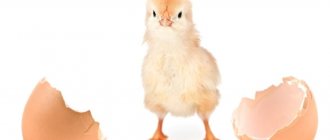If you decide to start breeding bees and don’t know where to start, then our article will answer one of the main questions to which you should know the answer - how do bees reproduce in a hive. And for a person who has never been involved in beekeeping, it is quite difficult to understand how bees reproduce. But now, we will try to explain it.
What types of bee reproduction are there? There are two types - artificial and natural.
The natural species is divided into two forms of bee reproduction - this is to recreate similar individuals and in order to increase the number of families. After swarming, one bee colony becomes two or more. The newly emerged queen bee takes part of the swarm with her. The rest remains with the old queen.
To increase the number and size of families, artificial methods are used.
Types of artificial propagation:
- Separation of families for half a summer.
- "Raid on the uterus."
- Layers of two types.
Natural type of reproduction
The natural type of reproduction is called swarming. There are three types of bees: worker bees, drones and queen bees. These three groups emerge from eggs laid by the queen bee.
The death of the queen bee implies the death of the entire hive. The queen bee leaves the hive only in two cases - during mating and at the time of swarming. She only lays eggs. The worker bees do the rest of the work. They are the largest group. The queen bee mates with several dozen drones at once.
Natural reproduction of families of honey bees and other species
One of the methods of reproduction in bees is parthenogenesis, when a full-fledged individual is born from an unfertilized egg. In this way, drones appear in the family with a complete set of the genome characteristic of the species.
How do bees mate?
Drones and queens reach sexual maturity and the ability to reproduce on the 10th day after leaving the cell. Males fly out of the hive and move approximately 4 km away from the swarm. Drones from all families gather in a certain place at a height of 12 m above the ground.
The queen makes her first familiarization flights at the age of three days. The purpose of the flight is to study the area around the hive. There may be several approximate flights. When she reaches sexual maturity, she is ready to reproduce. In warm weather conditions, it flies out to fertilize. The female bee secretes a secretion, the smell of which the drones react to. Mating with representatives of their own family does not occur. Drones do not react to their “sisters”, only to females from another swarm.
Mating in bees takes place in the air; at the moment of fertilization, insects fall to the ground, so they do not fly over water or near bodies of water. The queen makes several mating flights lasting 20 minutes. In the process of fertilization of one female, up to 6 drones or more are involved.
Throughout the entire process of reproduction, the stinging canal of the uterus remains open. When the paired oviducts are completely filled with the biological material of drones, she clamps the canal, the copulatory organ of the last male is torn off, closing the passage, and the drone dies. The arrival of a female into the hive with a white film near her abdomen is a signal that fertilization is complete. After a few hours the “trail” comes off.
Fertilization process:
- The male's seminal fluid is forcefully pushed into the ejaculation channel.
- Following the sperm, a secretion is released from the accessory glands, which propels the seminal fluid to the exit.
- Sperm is injected into the female's oviducts.
- Some of the liquid flows out, a large mass enters the seminal receptacle.
When the receiver is full, up to 6 million sperm accumulate in it. In case of bad weather, the queen's flight is delayed. The reproductive period of a female individual lasts about 1 month. If during this period she was unable to fertilize, then only drones are obtained from the clutch.
Attention! Bees do not leave queen drones in the colony; they are killed or pushed out of the hive.
Stages of development
The process of fertilization of the egg and mating diverge in time. The queen bee fertilizes the eggs at the time of laying and does this throughout the entire period of reproductive life. Cherrying is carried out in empty cells, they are different in size (drone ones are larger). At the moment of laying, the female injects seminal fluid from the seminal receptacle onto the egg. An egg laid in a drone cell remains unfertilized. The productivity of the queen per day is about 2 thousand eggs. Laying begins in February, after the insects have overwintered. Under favorable conditions in the hive (+350 C), frames with brood are observed in the spring. Maintaining the microclimate in the hive is the function of working individuals. Insects do not leave drones for the winter.
In the process of formation of bees, 5 stages are monitored:
- egg (embryonic stage);
- larva;
- prepupa;
- chrysalis;
- imago (formed adult).
The embryonic stage lasts 3 days, division of the nucleus occurs inside the egg, and during the crushing process, cells appear that form the wings, body and genitals of the insect. The inner shell of the egg ruptures and a larva emerges.
Postembryonic development takes place in several stages lasting up to 3 weeks. The larva is equipped with special glands that secrete secretions to form a cocoon. Outwardly, it does not look like an adult insect; immediately after emergence it looks like a rounded fatty body measuring 1.5 mm. The brood feeds on a special substance generated by adult bees. At the age of three days, the size of the larva reaches 6 mm. In 1 week, the initial weight of the brood increases 1.5 thousand times.
During the first 24 hours, the brood is fed with milk. The next day, the drones and workers are transferred to honey mixed with beebread; the queens are fed only milk until the end of formation. Eggs and larvae are located in open honeycombs. On day 7, a cocoon is formed around the prepupae, and the honeycombs are sealed with wax.
Bee development by day:
| Stage | worker bee | Uterus | Drone |
| Egg | 3 | 3 | 3 |
| Larva | 6 | 5 | 7 |
| Prepupa | 3 | 2 | 4 |
| Doll | 9 | 6 | 10 |
| Total: | 21 | 16 | 24 |
Attention! The shortest development cycle is for the queen, the longest for the drone.
On average, the birth of a bee from egg to adult takes 24 days.
How do bees appear?
After the cell is clogged, the larva creates a cocoon and remains motionless. During this time, all organs of the insect are formed. The pupa looks like an adult bee. After the formation period has expired, the insect’s body turns dark and becomes covered with fluff. The insect has a fully developed aircraft, organs of vision and smell. This is a full-fledged bee, which is distinguished from an adult individual by its size and color tone. A young bee is smaller and lighter in color. All this time, the children feed on the beebread left in front of the blockage. After complete formation, before birth, the bee gnaws through the wax covering and comes to the surface.
How a queen bee is born
From the moment the eggs are laid, the appearance of a new queen is regulated by worker bees. A new queen can be born from any fertilized egg, it all depends on the feeding of the brood. If the babies are subsequently transferred to honey and bee bread, then the young queens are left to remain on constant feeding with royal jelly. After clogging, the honeycombs are filled with milk. Visually, they are larger; there are up to 4 bookmarks per family.
After formation, the future queen is still in the comb until the food runs out. Then it gnaws a passage and appears on the surface. Her development cycle is shorter than that of drones and worker bees; immediately after birth, the queen destroys rivals that have not yet appeared. There will only be one queen left in the family. If the beekeeper does not remove the old queen in a timely manner, the colony enters a state of swarming.
Bee eggs and brood
Cells with eggs and larvae are brood. Brood is divided into two types: open and closed. Open – these are eggs and larvae not yet covered with lids. The worker bee is considered the carrier of the genetic code. Its functions include: controlling the quality and quantity of the queen’s eggs and raising the brood.
Reproduction occurs in this way: the queen mates with selected drones, nurse bees actively feed her, and then she lays eggs. Dense brood means the queen is healthy and productive. But loose means that the uterus is either sick or old and needs to be replaced.
Forms of bee reproduction
The main forms of reproduction of the honey bee are the reproduction of individual insects and the increase in the number of bee colonies - swarming. The first way is sexual, when the appearance of the larva is preceded by mating of the queen bee with the tinder bees.
If the egg remains unfertilized, it will hatch into drones.
The second way for bees to reproduce in the wild is to divide the bee colony using swarming, when half of the insects, led by a young queen, fly out of the hive and look for a new home.
In his own apiary, each beekeeper practices an artificial method of bee propagation, which includes methods such as:
- selection of some individuals from families (layering), their brood and some supplies;
- dividing the existing bee colony strictly in half;
- plaque on the queen cell or queen bee.
It is recommended to carry out artificial formation of young bee colonies before insects can begin natural swarming. The layerings forcibly obtained by beekeepers will be stronger and more industrious by the beginning of the honey harvest.
Be sure to read:
DIY bee feeder: types, what is best to use, how to make
From the few overwintered colonies, where there are spare queens, called nuclei, under favorable conditions - insulation and good nutrition with beebread and honey, you can organize a full-fledged bee colony to populate a new hive and already in the summer you can get commercial honey of good quality and young worker bees.
Reproduction of bees naturally
As the number of insects increases, they become cramped in one hive: they almost stop reproducing and carrying out their life activities normally. This becomes the main reason for the separation of bee colonies. In the new nest there will be enough space for the eggs of the young queen, and work for the working bees, and intra-hive reproduction will take place.
Bees prefer to swarm and leave their old home in calm weather. Before departure, they store honey in their crops, which they will eat all the way.
The queen appears from the hive only after half of the swarming bees have flown out. All individuals ready to travel surround the female and sit for some time in a shady area, after which they take off and fly away to a new home.
When the bees have enough space and food, they increase the size of the colony through the usual mating of the queen bee with males, on average from 6-8, which ensures an increase in the viability of the larvae.
First, the drone is sent into flight, then the queen joins it, the whole process lasts no more than half an hour and is carried out only on a clear and windless, warm day. The female begins to lay eggs a couple of days after mating.
Features of artificial bee propagation
In modern apiaries, the main method of replenishing bee colonies is the artificial reproduction of insects. Using its features, beekeepers work with significantly greater productivity and can accurately predict the growth parameters of bee colonies, taking into account the best breeding qualities of these individuals.
Be sure to read:
Feeding bees for the winter: what they eat, how and when to feed, when feeding is not necessary.
The main thing in artificial propagation is to prevent natural swarming of insects, when it is easy to lose the “rogue” part of the colony.
Swarming
Swarming is the division of one bee colony into several parts, where the young queens, taking part of the swarm with them, fly to another place, the remaining ones are grouped near the old queen bee.
The separation itself begins a long time after this happens. In May, nectar collection begins to decrease, because... Only in June do the main honey plants begin to bloom. A large number of worker bees accumulate in a bee colony and then they can go into a state of swarming. When spring comes, the young generation, which has a lot of energy, replaces the wintering insects. They are able to feed a larger number of larvae. This is why the bee population is growing so quickly.
Sometimes bees begin to cluster abundantly near the hive. This may be in cases where weather conditions do not allow bees to work or there are very few honey plants. During this time, they do nothing and their performance decreases.
How bees are born
Having figured out how bees mate, many will be interested in how they are born. Despite the differences in breeds, the process of birth is the same for all bees. In their development, they go through several stages, eventually dividing into workers and drones.
Embryos consist of a nucleus surrounded by protoplasm and covered with a shell. The egg remains in this state for 3 days. Upon transition to the larval stage, the mechanism of dividing the brood into hierarchies is activated. Its nurse bees control it, choosing their own food for each individual. The duration of subsequent stages in development depends on this.
Stages of bee development
The queen emerges from the pupa earlier than other individuals - on the 16th day after laying the egg. Worker bees will need 21 days, the drone will emerge from the pupa on 24 days.
Even before the egg goes into the larval stage, nurses put a little milk in the cell - it softens the shell. This product facilitates exit and is a nutrient medium. The food is so high in calories that in 3 days the larva manages to increase in size by 250 times.
Queen bee life cycle
On the 4th day there is a division in the diet:
- drones and worker bees are fed unlimited amounts of beebread and honey until the cells are sealed;
- if there is a need for a new queen, then several larvae are given royal jelly, while rebuilding their honeycombs.
At the pupal stage, bees undergo certain metamorphoses. This is especially true for the uterus. Under the influence of milk, her genitals develop, and a working proboscis does not grow. There are also no wax glands or baskets on the legs. But these organs develop well in worker bees.
Despite the fact that drones are fed in the same way as female workers, their development is directed towards the reproductive system. This is predetermined by nature - all the eggs inside the uterus are drones. They turn into workers only during the process of fertilization.
Prerequisites for swarming
- A large number of idle bees
- Poor conditions in the hive
- A very old queen that cannot secrete large amounts of pheromones
After laying eggs, 50% of the swarm leaves the nest to another location.
Before flying away, the bees fill their bellies with honey and all together, at the signal from the scouts, fly away from the hive. When flying out of it in the first hours, they are nearby, but after a couple of hours they fly away to a great distance. When flying, they stay at a height of about three meters.
Reproduction naturally
Under normal conditions, bees reproduce without human intervention. The queen is responsible for increasing the population; it differs from standard bees or drones in size and weight (3-4 times larger).
In the natural environment, the queen lays eggs in pre-prepared cells. The process is interrupted only during the period of active nectar collection or when there is a shortage of protein-rich food.
Population increase
To increase the number of insects you need:
- the uterus, which ensures the formation and laying of eggs;
- worker bees that support the life of the new generation during development;
- drones.
During the mating process, the drones inside the hive fill a special cavity inside the body of the uterus with seminal fluid, which remains biologically active for 4 years.
Up to 20 drones mate with the queen at one time. During the process of oviposition, seminal fluid reaches the surface through a duct. But some of the eggs are not exposed to sperm, and new drones emerge from them.
After the end of the supply of seminal fluid, the laying process slows down, and new queens appear in the combs, flying out with a swarm or replacing the old “queen”.
Swarming
It is the only natural method to propagate bee colonies. When a new queen appears in the hive, a group of bees is formed, which flies out through the entrance in search of a new place to live.
Swarming becomes more active in the spring due to the appearance of a large number of young bees that are not involved in the process of feeding the larvae. Additional reasons for swarming are deterioration of conditions inside the hive or aging of the uterus, accompanied by a drop in reproductive capacity.
New queens are raised in cells similar to worker bees, but the larvae receive special nutrition. Swarming bees actively eat honey, waiting for a signal from the new “queen”. According to statistics, up to 50% of insects can fly away from the hive, and up to 2/3 of the young specimens will be part of the family.
The emerging swarm sits on branches next to the hive for several hours, waiting for the scout bees to find a place to live. The beekeeper needs to collect the swarm and place it in a new hive or destroy the queen. Then the insects will come back.
Swarming continues until the queens emerge. In each subsequent family there is a gradual decline in the number of insects.
After the swarming is completed, the remaining bees in the hive destroy the old queen in an original way. Insects tightly cling to it, body temperature increases to critical, which leads to death.
To prevent swarming, it is necessary to place a new queen in the hive every year, as well as maintain comfortable conditions for insects (for example, poor ventilation causes some bees to fly out).
Separated bees and catching them
When the first swarm has flown out, the rest of the groups will fly. Each subsequent group has fewer bees. When swarming is over, the bees kill the queen bees that have not emerged from the queen cells. Bees that have separated from the main family begin to actively create honeycombs and collect honey.
Natural swarming is not desirable for beekeepers. Because it is difficult to control. After all, it’s not so easy to catch a newly formed swarm that flies to another place. In addition to all this, productivity decreases. It is for these reasons that beekeepers prefer to use artificial propagation. The advantage of this method is that the bees become more efficient, continuously build honeycombs and actively collect honey.
Brood
Everything here is quite simple - the mechanism of the process itself is quite reminiscent of reproduction in most animals, as well as people. At least externally.
The queen bee (also known as the queen bee) spends most of her life in the hive. Nurse bees take good care of her, feed her with royal jelly, take eggs, thoroughly massage her sides, and so on. As a result of such care and increased nutrition, the uterus becomes fat and loses the ability to fly. But it lays eggs in huge quantities - several thousand a day. Moreover, for this she does not even need to mate - at this stage, bees reproduce by parthenogenesis, that is, without the participation of males (drones).
Nurse bees take the eggs, take them to special honeycombs, where the egg turns into a larva, then into a pupa, from which a new worker bee emerges. Thanks to this, the reproduction of workers proceeds quickly and without failures.
However, parthenogenesis in bees (asexual reproduction) is only suitable for cases where asexual worker bees are needed. But in some cases, the queen leaves the familiar world of the hive - this is preceded by serious preparation, and in general this process is very interesting. Therefore, we will tell you more about it.
Artificial methods of reproduction
How do bees reproduce artificially? There are three options. Now we will analyze them in detail:
Layering with a barren uterus:
- First, a good colony with 10 streets and 7-9 brood frames is selected
- Then 2-4 frames of printed brood are taken together with the bees and carefully transferred to another
- Bees from two frames are transferred into it, and a small supply of food is placed
- When the swarm returns, a non-fertile queen should be introduced into the newly formed bee colony or a mature queen cell should be installed
How do bees give birth?
To understand how bees give birth, it is necessary to delve into the specifics of their physiology. In insects, everything happens a little differently than in animals. If the mammals copulated, then fertilization began immediately. In bees, this stage is delayed for a certain time.
At the time of mating, a significant number of eggs are already in the uterus. After copulation, up to 7 million sperm accumulate in the spermatic receptacle. Fertilization occurs at the moment when the uterus begins to lay eggs; she can do this throughout her life, releasing the existing “gene pool” in batches.
The absence of sperm in the uterus does not prevent the bee from being born. The infertility of the brood is genetically predetermined - this is how drones are born.
Laying eggs
The queen lays an egg in each cell, attaching one end to the bottom. The embryo stands strictly upright. The egg begins to slowly bow and after 3 days it finds itself in a horizontal position. By the angle of inclination you can determine on what day the masonry was made.
Bee colony - queen bee
The labor process continues continuously, with the uterus pausing every 20 minutes to rest. The queen's retinue looks after her and feeds her constantly.
Note! If food supplies are limited, or there are few worker bees in the hive, the queen stops laying eggs, postponing the process to a more appropriate time.
Knowing the peculiarities of the development of insects and having studied the question of how bees are born, it is easier for the beekeeper to breed honey collectors. It is necessary to propagate them artificially, since bees sometimes die under the influence of natural factors.
Prefabricated layering
- Let's take 1-2 broods from different bee colonies and transfer them to a new hive in advance
- We attach frames with honey and beebread on different sides
- Between the brood we place a cage with a queen bee
- Then we insulate the nest and close it
It is advisable to do layering when there are not very aggressive bees in the hives, i.e. flightless bees. 20-22 days before the bribe, you can form normal prefabricated layers. By doing this, you can prevent the natural swarming of a strong family.
Reproduction by family separation:
- Take 1 family of 12 streets and 8 frames with brood
- We place the new hive next to the old one, it is necessary that it does not differ in shape and color
- We transfer half of the bees, brood and food frames from the old one to the new one. The queen bee does not leave the family.
- We attach several frames with foundation to both hives
- Houses are placed within a meter radius of the mother hive. Thus, the flying bees will equally share
Pros and cons of artificial propagation
Use several modern methods to quickly reproduce and get output:
- individual layering;
- family separation;
- method of attacking the queen bee;
- prefabricated layers.
To form layers of bee colonies, brood frames are used, prepare the hive and transfer them. Laying is done in the summer, when there are non-aggressive insects in the hive. This way you can weaken a strong family and prevent swarming.
During the season and on sunny days, the reproduction of bee colonies occurs with the help of a raid - accelerated reproduction, which does not require the removal of queens. To do this, you need to bring an empty piece of evidence with honeycombs and foundation. First you need to find the queen, then prepare a frame with brood. Then move the old hive to another place, and place a new one there.
"Raid on the uterus"
- We transfer 4 frames with brood to the new hive
- We install foundations and combs on different sides of the brood
- We place the adult queen in a new hive
- We move the old hive to any free place, but not far, and put the new one on it
Thus, all bees that are capable of flying will live in this hive, but it is necessary to ensure that there is always food and water in the old one.
All these methods are based on bee biology: those that cannot fly will remain where they are transferred, and those that can fly will return to their place.
To summarize, from this article you learned about the forms, types and principles of reproduction. About how bees reproduce in a hive and what needs to be done for this, what conditions to create. We hope you no longer have a question about how bees reproduce.
Where do bees come from?
Bees create families in which functional loads are strictly distributed between individuals. Within one swarm, 3 types of insects coexist: workers, queen and drones. The responsibilities of worker bees include collecting honey, caring for offspring, and feeding the female. Drones (male birds) are responsible for fertilizing the queen. Their only goal is reproduction. The queen lays eggs and is the foundation of the bee colony, but she is not responsible for raising the offspring.
Bees reproduce in the wild naturally: by mating a female with a drone and swarming. In the latter case, part of the family leaves with the young queen and forms a new family. In apiaries, there is a method of artificial reproduction of families with the participation of a beekeeper. Reproduction is carried out by dividing the family, “by raiding the uterus”, by layering.
Prolapse of the uterus
Under certain conditions (we'll talk about them a little later), the queen leaves the hive to be fertilized by drones. This is necessary to lay eggs that will hatch into other queens and drones. Parthenogenesis cannot be avoided here. What is the reproduction of bees in this case? It's all quite interesting.
A few days before departure, the queen does not lay eggs and stops feeding on royal jelly, switching to honey. As a result, she loses a lot of weight and gains the ability to fly. This is what she does - flying out of the hive, the queen rises to a great height, where she meets the drones. Moreover, these can be both drones from her hive and from strangers. Thanks to this, blood renewal and minor mutations in the offspring are ensured, aimed at improving the qualities of bees and adapting to certain environmental conditions.
During the flight, the queen is fertilized by drones and, after returning to the hive, is ready to lay eggs, from which not asexual worker bees will emerge, but new drones and a queen.
We use layering
Alas, the natural division of a family, or swarming, is a rather complex and unpredictable process. It is very difficult to guess in advance exactly when this will happen, although an experienced beekeeper will always be able to determine in a few days that a swarm will soon emerge - the tone of the hive’s hum will change. You can also guess that a swarm will soon emerge by noticing several ripening queen cells.
But still, artificial methods of division are gaining great popularity. The use of layering is one of them.
The process is as simple as possible and even a novice beekeeper can do it.
Two or three frames with printed brood are transferred from an old, fairly strong, large hive to a new hive. Moreover, they are transported along with the nurse bees sitting on it.
You also need to move two honey frames. Then one of the queen cells is transferred to the hive - preferably the largest, most mature one. The queen will emerge from it and immediately begin the work of laying eggs. In this case, the swarm will definitely not die, will not get lost, and will not weaken. After all, he will immediately move to a new place. And the old family will have a job - restoring supplies of honey and honeycomb.


